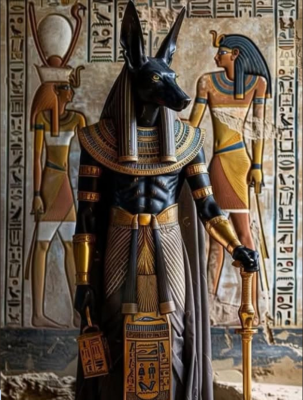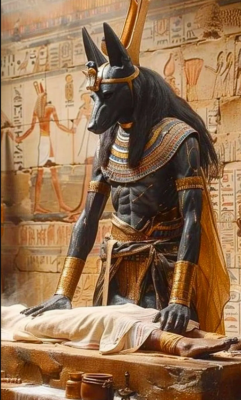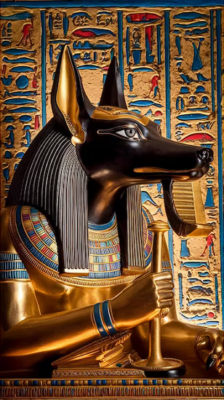Anubis, the jackal-headed god of ancient Egypt, has long been associated with funerary rites and the afterlife. Depicted with a human body and a black jackal’s head, he symbolized the guardian of the dead and the guide of souls into the afterlife. Beyond mythology, archaeological discoveries have provided fascinating insights into the worship and significance of Anubis in Egyptian religious practices. These findings not only highlight his role in funerary rituals but also raise intriguing questions about the origins and evolution of his worship.
The Role of Anubis in Ancient Egyptian Beliefs
Anubis and the “Opening of the Mouth” Ritual
One of the most well-known depictions of Anubis in Egyptian tombs is his involvement in the “Opening of the Mouth” ritual. This ceremony was a crucial part of Egyptian funerary traditions, believed to restore the deceased’s ability to speak, eat, and function in the afterlife. Hieroglyphic inscriptions and murals often show Anubis holding a sacred tool, touching the mummy’s mouth to complete the ritual.
Guardian of Tombs and Judge of Souls
In the Book of the Dead, Anubis plays a central role in the judgment of souls. Ancient Egyptians believed that after death, a person’s soul was led to the Hall of Truth, where Anubis weighed their heart against the feather of Ma’at, the goddess of truth and justice. If the heart was lighter than the feather, the soul could pass into the afterlife. However, if it was heavier, it would be devoured by the fearsome creature Ammut.

Archaeological Discoveries Related to Anubis
The Anubis Statue in Tutankhamun’s Tomb
One of the most significant archaeological finds related to Anubis was the discovery of a gilded statue of the god in the tomb of Pharaoh Tutankhamun in 1922. The statue, placed atop a chest containing sacred papyri, served as a guardian of the tomb. This discovery reinforced Anubis’ role as a protector of the dead, particularly the pharaohs.
The Jackal Necropolis at Saqqara
At Saqqara, one of Egypt’s largest burial sites, archaeologists unearthed thousands of mummified jackals and domestic dogs, animals considered sacred to Anubis. Some researchers suggest that these animals were raised in temples and offered as sacrifices to the god, similar to how animals were venerated in other ancient religious practices.

Anubis: Mythological Figure or Historical Influence?
Could Anubis Have Been Inspired by a Real Person?
Some theories propose that Anubis may have been based on a historical figure—possibly an early priest or embalmer whose legacy evolved into divine status over time. As embalming and mummification became more sophisticated, the image of Anubis might have grown from a respected ritual leader into a deity governing death and the afterlife.
Was Anubis Replaced Over Time?
Initially, Anubis was the supreme god of the dead. However, during the Middle Kingdom, his role was gradually overtaken by Osiris, the god of resurrection and the afterlife. Despite this shift, Anubis remained vital in funerary practices, particularly as a protector of tombs and a guide for souls in their journey beyond death.

Unanswered Mysteries
While much has been uncovered about the worship of Anubis, many questions remain. Are there still undiscovered temples dedicated to Anubis? Could more mummified jackals be buried in hidden chambers? And might future excavations reveal additional artifacts or texts that provide deeper insights into his cult?
Regardless of the answers, one thing is certain—Anubis continues to be one of the most fascinating and mysterious figures of ancient Egyptian mythology and archaeology.

CÁC TIN KHÁC
Mary Walton: The Forgotten Inventor Who Helped Clean Up America’s Cities
Tomb of Queen Nefertari in the Valley of the Queens, Egypt
Discover the Hypostyle Hall of the Temple of Hathor at Dendera
Venus de Losange: Unveiling the Mystery of a 20,000-Year-Old Paleolithic Icon